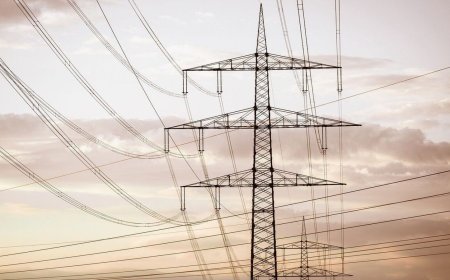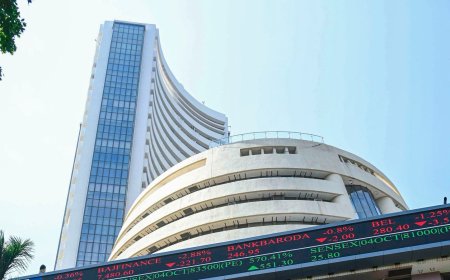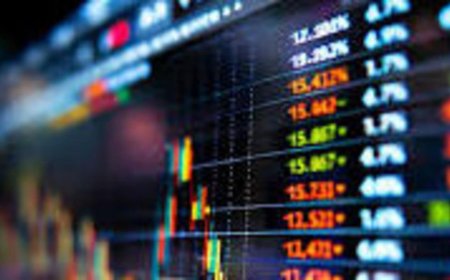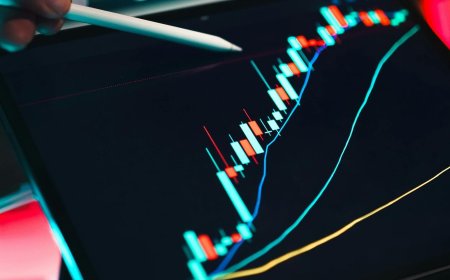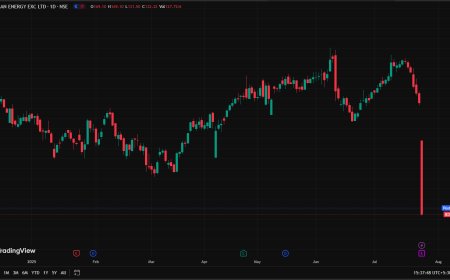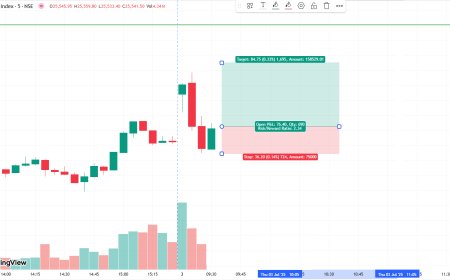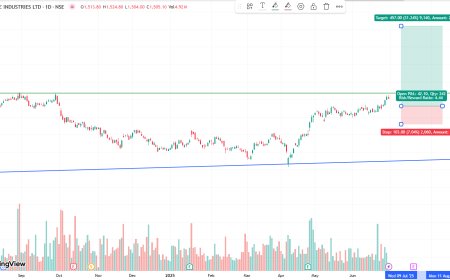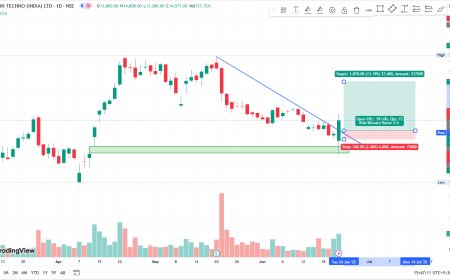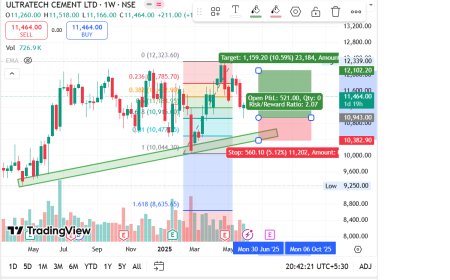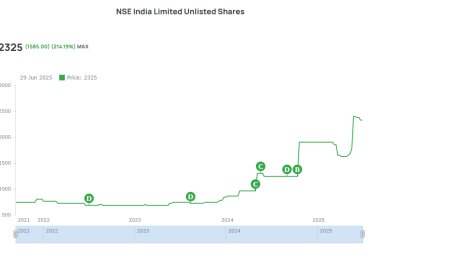Wall Street Today: US Stocks Slip as Trump Accuses China of Tariff Violations; Nvidia Falls 3%
US stock markets end lower as former President Trump reignites trade war fears by accusing China of violating tariff norms; tech stocks slide, Nvidia drops 3%.
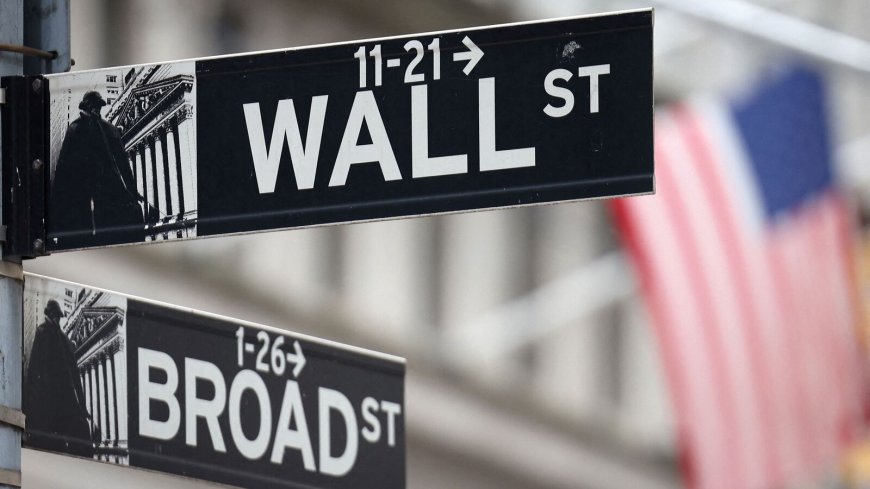
Wall Street Today: US Stocks Fall After Trump Blames China for Violating Tariff Norms; Nvidia Down 3%
New York, May 31, 2025 — U.S. equities ended the final trading day of May on a sour note, with all three major indexes closing in the red after former President Donald Trump reignited trade war fears by accusing China of violating longstanding tariff agreements. The unexpected remarks sent shockwaves through an already cautious Wall Street, triggering a broad-based sell-off across key sectors—most notably in tech and semiconductors, where Nvidia tumbled 3%.
Investors, who have been balancing mixed economic data with speculation around future Federal Reserve rate moves, were further rattled by the return of geopolitical tensions. Trump’s latest trade salvo appears to be stoking memories of the 2018–2019 trade war that battered global markets and disrupted supply chains worldwide.
Market Snapshot: Broad Declines Across the Board
-
Dow Jones Industrial Average fell 278.61 points, or 0.74%, to close at 37,912.34
-
S&P 500 dropped 44.36 points, or 0.87%, ending at 5,239.48
-
Nasdaq Composite slid 204.19 points, or 1.23%, to 16,342.91
The losses marked the worst single-day performance for the Nasdaq since early April, as megacap tech names bore the brunt of the sell-off. The S&P 500, which had been inching toward new record highs earlier this week, retreated sharply as investors moved into defensive positions.
Trump’s Trade Comments Rattle Markets
During a campaign rally in Ohio Thursday evening, Trump accused China of “blatantly violating” the tariff norms agreed upon during his administration and warned that if reelected, he would impose “automatic tariffs on every Chinese import,” starting at 10% and potentially rising to 60% for key strategic sectors such as electronics and rare earth materials.
“China has cheated us again. They are not following the rules, they’re flooding the market with cheap products and stealing American jobs,” Trump declared. “We will make them pay, believe me.”
While the White House has not issued a formal response, markets reacted swiftly on Friday morning, with U.S. futures turning negative even before the opening bell.
“Trump’s remarks are a stark reminder that trade tensions could quickly return to the forefront of investor concerns, particularly in a polarized election year,” said Jonathan Lang, chief strategist at New York-based Pallisade Capital. “Markets had been pricing in geopolitical risk at the margins. Now it’s front and center again.”
Tech Sector Hit Hard, Nvidia Slumps
Technology stocks bore the brunt of the decline, with the Philadelphia Semiconductor Index down nearly 2%. Nvidia (NVDA), a bellwether for the chip sector and the market’s AI darling, fell 3% to close at $1,176.25, extending its weekly losses.
The slide came despite the company’s blockbuster earnings report earlier this week, where it posted a 262% year-over-year increase in revenue, driven by explosive AI demand. Analysts pointed to profit-taking and renewed supply chain concerns as contributing factors behind the drop.
“China is a major customer base for many U.S. chipmakers. Any re-escalation of trade hostilities could put a dent in forward guidance, especially in semiconductors,” said Priya Mehta, equity research analyst at Bloomberg Intelligence.
Other major tech stocks also declined:
-
Apple (AAPL) lost 1.5%
-
Tesla (TSLA) dropped 2.8%
-
Microsoft (MSFT) fell 1.2%
-
Advanced Micro Devices (AMD) slipped 2.7%
Defensive Sectors Offer Some Resilience
In contrast, defensive sectors such as consumer staples and utilities offered relative stability amid the broader market decline. The Utilities Select Sector SPDR ETF (XLU) rose 0.4%, while Procter & Gamble (PG) and Coca-Cola (KO) each gained about 0.3%, reflecting investor rotation into safer assets.
Gold futures also climbed to a one-week high, with the spot price up 1.2% to $2,376.80 per ounce, as geopolitical jitters sparked a flight to safety.
Broader Trade Implications Weighed Heavily
While Trump’s comments do not represent active policy—given his current non-incumbent status—the mere threat of tariff escalation was enough to unnerve investors. Market participants remain keenly aware of the economic toll of previous tariff battles.
According to the Peterson Institute for International Economics, the 2018–2019 trade war shaved approximately 0.6% off U.S. GDP growth and resulted in over $130 billion in additional consumer costs. A return to those conditions could undermine an already fragile global growth outlook.
“Markets are forward-looking machines,” said Gabriel Cohen, head of global strategy at TMC Capital. “The prospect of tariffs—even if hypothetical for now—could trigger a risk-off sentiment and start a domino effect on corporate earnings, inflation, and Fed policy expectations.”
Treasury Yields and Dollar React
U.S. Treasury yields declined as investors sought safer assets. The 10-year yield dropped 5 basis points to 4.34%, while the 2-year yield eased to 4.72%. The bond rally reflects growing market expectations that the Fed could lean dovish if trade tensions materialize into economic weakness.
The U.S. dollar index (DXY) rose 0.2%, buoyed by haven demand, while the Chinese yuan weakened to 7.29 against the dollar, its lowest level in over two months.
Economic Data Mixed, Inflation Still in Focus
Adding to market uncertainty, the Commerce Department reported that U.S. core PCE inflation—the Fed’s preferred gauge—rose 0.2% in April, slightly below expectations. On an annual basis, core PCE eased to 2.8%, from 2.9% in March.
The data provided modest relief to those hoping for rate cuts later this year, but Friday’s geopolitical overhang overshadowed any bullish sentiment.
“Inflation is slowly drifting lower, but the Fed remains cautious,” said Alicia Thornton, senior economist at Barclays US. “Now with Trump’s China rhetoric re-entering the fray, the calculus becomes more complex.”
Global Markets Also Take a Hit
The impact of Trump's remarks was felt beyond U.S. shores. European equities also turned lower, with the Euro Stoxx 50 ending down 0.9%, while Asian markets, which had closed before Trump’s comments were widely reported, are expected to open sharply lower on Monday.
Hong Kong’s Hang Seng futures were already down 1.2% in after-hours trading, signaling a turbulent start to the new week for Asian investors.
Investor Sentiment Turns Cautious
The CBOE Volatility Index (VIX), often dubbed the “fear gauge,” surged 12% to 15.73, its highest level in nearly a month, signaling elevated market anxiety.
Meanwhile, institutional investors are reportedly trimming exposure to risk assets. Data from EPFR Global shows net outflows of $1.8 billion from U.S. equity funds in the past week, while bond funds saw inflows of $2.1 billion.
“Markets were looking for a smooth summer. That may not happen now,” said Lang.
Looking Ahead: Election Year Risk Premium Rises
With the U.S. presidential election just five months away, analysts believe geopolitical noise—including trade rhetoric—will increasingly influence market direction. Trump’s China stance is expected to become a central campaign theme, prompting volatility in sectors exposed to international trade.
“The market must now price in a political risk premium,” said Mehta. “If this becomes a recurring narrative, we could see repeat episodes of sell-offs similar to 2018.”
Next week’s focus will turn to the June jobs report, scheduled for release on Friday, as well as a series of Fed speeches that may offer further insight into policymakers’ thinking.
Wall Street’s decline on Friday serves as a potent reminder of how swiftly geopolitical tensions can upend market momentum. Former President Trump’s renewed accusations against China—despite his current outsider status—highlight the precarious balance between politics and economic stability in an election year.
With Nvidia’s stumble symbolizing broader tech sector vulnerability and global investors on edge, the road ahead looks anything but smooth. For now, market participants are bracing for a bumpy summer shaped as much by campaign rhetoric as by central bank policy.
What's Your Reaction?
 Like
0
Like
0
 Dislike
0
Dislike
0
 Love
0
Love
0
 Funny
0
Funny
0
 Angry
0
Angry
0
 Sad
0
Sad
0
 Wow
0
Wow
0


